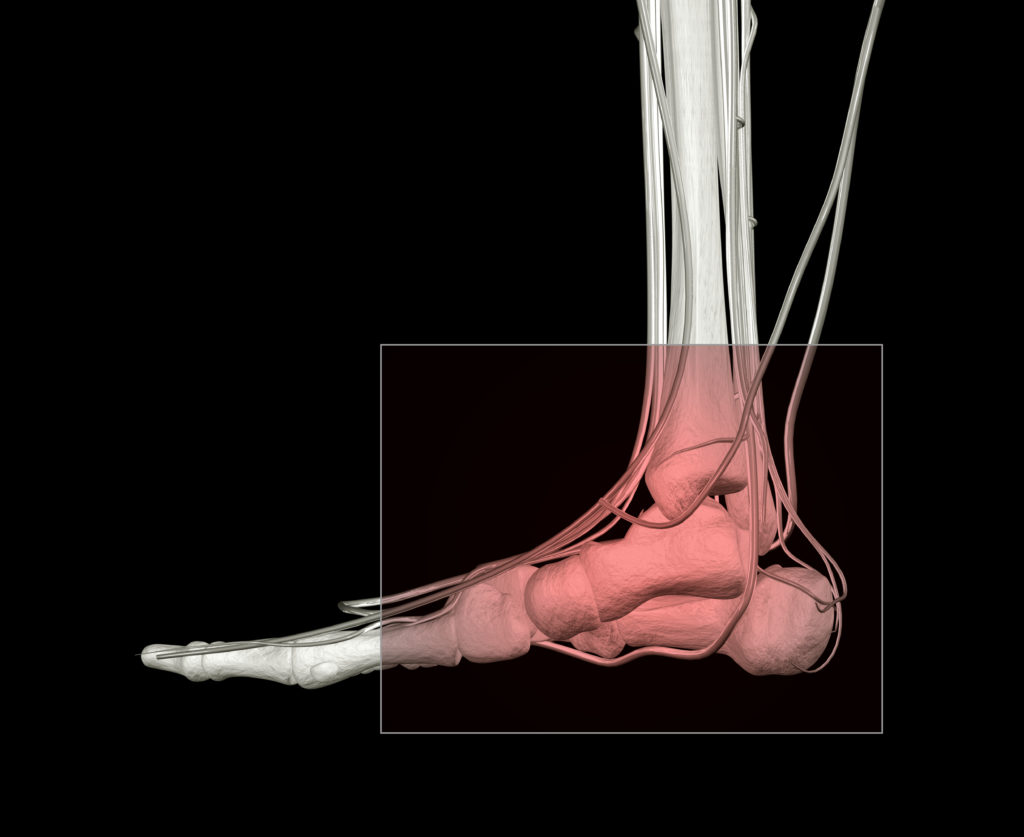 While the fact that 90% of plantar fasciitis cases can be resolved with conservative at-home treatment, if you’re one of the 10% whose plantar fasciitis doesn’t respond to natural remedies–and perhaps even gets worse–it can be discouraging, to say the least.
While the fact that 90% of plantar fasciitis cases can be resolved with conservative at-home treatment, if you’re one of the 10% whose plantar fasciitis doesn’t respond to natural remedies–and perhaps even gets worse–it can be discouraging, to say the least.
Everyone is different. And if you’ve exhausted the options for conservative treatments like rest, icing, stretching, and support from orthotic inserts over nine months to one year, it’s time to consider more advanced treatment options with your doctor.
What are your options when plantar fasciitis won’t go away, and what can you expect in terms of options, costs, and special considerations?
The good news is, there are several effective options to explore with your doctor.

Advanced Treatment Options for Plantar Fasciitis
There are many treatment options for advanced plantar fasciitis that gets worse or doesn’t respond to conservative treatments. However, take heed of separating anecdotal evidence (you’ll find an abundance!) in favor of research. The following are the most popular advanced treatments for stubborn cases of plantar fasciitis:
Ultrasound Therapy:
Ultrasound therapy essentially works by vibrating and stimulating tissues and cells. It’s relatively painless, simple, and less expensive than many other advanced therapies. However, while some people sing the praises of this advanced treatment for stubborn plantar fasciitis, the evidence of its effectiveness is meager at best.
Extracorporeal Shockwave Therapy (ESWT):
ESWT is more expensive (often close to 200 dollars per visit) and significantly more painful than standard ultrasound therapy. Several studies have concluded it seems to be effective for treating stubborn cases of plantar fasciitis; however, there by no means is a consensus among doctors or patients.
Platelet-Rich Plasma Injections:

In this therapy, your own platelet cells are centrifuged and then injected into the damaged plantar fascia. And while this therapy has become very popular among certain athletes for a variety of injuries, its effectiveness hasn’t been proven. It’s also expensive–running upwards of $300 per injection.
Corticosteroid Injections:
Cortisone, a powerful anti-inflammatory, is generated naturally by your body in response to stress. Corticosteroid injections use a synthetic version of cortisone and are injected directly into the heel. While these injections appear to have high rates of success for short-term relief (several weeks), long-term effects are unclear. The cost of one injection can range from $100 to $300; a series of three shots is the typical prescription.
Radiation Therapy:

Radiation therapy, often used in the treatment of cancer, has been shown to be an effective treatment for some stubborn cases of plantar fasciitis. This therapy is also on the lower end of cost, has minimal side effects and risks, is simple and non-invasive, and is not painful. The procedure similar to getting an x-ray. One 2012 study found that 80 percent of patients experienced complete pain relief following the therapy, and 64 percent were still pain-free 48 weeks later.
Intracorporeal pneumatic shock therapy (IPST):
This new therapy is similar to ESWT and applies shock waves to heel spurs. It requires local anesthesia and is less painful than ESWT. One study showed a 92% success rate in pain reduction reported by patients. It’s also less expensive than ESWT.
Numerous Surgical Options:
While surgery should be considered as a last resort for advanced disease because of its cost and potential complications, it may be a good choice if other treatment methods fail. Many types of surgery for plantar fasciitis have high success rates but require significant time off your feet, high costs, and pain.
Finding a Plantar Fasciitis Doctor
It can be a challenge to find a family doctor who is prepared to treat severe or chronic cases of plantar fasciitis. Many people who suffer from plantar fasciitis that does not respond to treatment seek the help of a podiatrist, who specializes in feet. However, not all podiatrists are alike. Some may lean more heavily on surgical options, while others take a more graduated approach. Search medical forums like ratemds.com and patient forums dedicated specifically to plantar fasciitis for recommendations and insight before you make a commitment to a particular doctor. If you find that you’re not aligning with a particular doctor, don’t be afraid to make a change. It might be a hassle, but your peace of mind and healing are worth it!
Managing Chronic Heel Pain

Many advanced treatment options for plantar fasciitis are administered over a period of time. During treatment, it’s important to have go-to options for pain management that help you find relief and stay positive. Working with your doctor, you may find that the following pain-management tools are helpful while you undergo advanced treatment for plantar fasciitis:
- RICE: Conservative methods used to treat plantar fasciitis can still be used as tools to manage pain, even while exploring more advanced treatment options. RICE, or rest, icing, compression, and elevation will help improve circulation, numb pain, and reduce inflammation.
- Orthotic Inserts: Orthotics made especially for plantar fasciitis not only provide cushioning but lift the heel and arch so that heel spurs (a major source of pain in many cases of plantar fasciitis) don’t dig into the heel. Click here to get doctor-recommended orthotic inserts.
- Night Splints: Using a night splint, which gently and comfortably stretches the heel and arch while you sleep, can help take the bite out of morning pain.
- Self-Massage: Applying gentle pressure while rolling a mobility ball or golf ball beneath your heel and arch can stimulate blood flow and reduce pain.
- Stretching: A variety of stretches for the heel and foot can improve flexibility and strength in the arch, as well as reducing morning pain.
- Over-the-Counter Anti-Inflammatory Drugs: Anti-inflammatories like ibuprofen can reduce inflammation and pain as needed. Just be sure to follow dosing instructions and consult with your doctor when taking these drugs long-term, since overuse can harm the lining of your stomach.
While conservative treatments for plantar fasciitis are appealing because of their effectiveness and low cost, there are cases in which advanced treatments and even surgery may be the right choice for you. By understanding your options, working with a trusted doctor to create a plan, and using pain-management techniques, you can look forward to a brighter future that doesn’t revolve around foot and heel pain.




I was diagnosed with plantar fasciitis and I’ve had special shoes as well as inserts in my shoes. I’ve also had a brace and I’m now in my second cast. None of which these things are helping if anything it’s making it worse. My foot doctor don’t want to do surgery and I’m in a lot of pain. What are my options if my doctor don’t want to do surgery. I’m lost and in a lot of pain and discomfort and I don’t understand why he won’t just do surgery.
That’s a bummer, I had the surgery in September and I’m still in a lot of pain, pt 2x per week and I just got a cortisone injection. Yes, I still feel the pain. Keep your head up and just keep trying. I wish you well. Try all other things before surgery. Have faith in the doctor, listen to your gut instincts.
Shockwave and ultrasound. It’s expensive but works to relieve stubborn heel pain and worth the investment! add custom orthotics for proper alignment inside stable, well-made shoes and your pain will go away! Worked wonders for me!!!!!!
I just had 4 shockwave treatments worth 800 dollars and orthotics that cost me another 799 dollars and my pain feels worse than when I started.
Mindi,
I have a similar story. My PF will just not get better and it is very frustrating. I would rather just do surgery to relief the pain that am experiencing.
Does anyone have a plantar fibroma cyst I formed one under my left foot. I was doing good with out pain but now my heel is really bad were it takes my days away. i don’t want surgery I heard nightmare about the effect surgery has to the body. Is there a thing were ypu can over stretch
I have fibromotosis which is tumors on the fascia tendon which has probably caused the Plantar Faciiatis I have. The tumors are painful. You may have the tumors and not cysts
I was recently diagnosed with plantar fasciitis also. When reviewing my treatment options (I’m an RN and tried R.I.C.E and Ibuprofen for 3 weeks with no relief before going to my doctor), the night brace was an option along with compression socks, stretching exercises, oral steroids, steroid injections, massaging and more R.I.C.E. He also said it can take 9 months to a year! Have you tried any of these? Have they not worked? How long has it been? Please consider surgery as a LAST resort because the benefits do not always outweigh the risks. Make Naprosyn and Aleve your friends. Good Luck
I’ve had PF for two years now. I’ve tried RICE, stretching, night splints, orthotics, and self massage. It’s not gone anywhere. Most cases go away within a year though so just be patient and diligent.
I’m not ready for surgery but these other options seem worth looking into at this point.
My gosh! I’m sorry. I’ve had PF for 14 months now and it’s improved a bit, but I still have a lot of pain. Do you still stretch everyday? I started stretching 3 months ago and it’s helped, but I’ve got a wall with shedding the pain. Let me know what else you’ve done. I’ve had 4 cortisone shots and custom orthotics and am finishing PT with ultrasound abs strength exercises. I feel the pain and swelling should have disappeared by now.
I hope your feeling better this PF is so annoying. I was doing a little better and it came back I am not consisted with everything and maybe thats why it came back. I am always on my feet. I don’t surgery I did form a plantar fibroma cyst painful a big ball
Hi, I guess I’m just confirming the worse case scenario for anyone reading this….I’m active duty military..I injured both my feet doing routine sprints in August 2019…since then I’ve done everything (RICE for 3 most, then 6 mos) wore the boot, the sling, got custom orthotics, anti inflammatories and even nerve blockers that went on for a year….then diagnosed with an unknown mass in my right foot….luckily that got me seen by one of the best Duke Orthopedic Oncologists (which is rare in the Army to be seen by the best). Luckily it wasn’t cancer but he did confirm what everyone is saying…wait on surgery as a last resort. I spent a year hobbling and in excruciating pain went back and he said get the procedures. I received Tenex in both feet (not at the same time). Simple procedure where they basically scrape the scar tissue thats formed on the fascia and suck it out. Tiny puncture mark is made and recovery is about 2-4 was. Pain came back. I got steroid injections….they last maybe 48 hours but comes with the pain of getting a needle in the foot. I recently got the ultrasonic shock wave treatment and no improvement. I have a mostly sedentary job in the Army and I’ve served 16yrs. This has effectively ended my career. The pain is dehabilitating after periods of sitting and first thing in the morning that I walk like an arthritic senior citizen, and I’m only 38. I have a lot of life left and I’m now certain I’ll be living with this pain for the rest of it. I’m looking into the Kuru shoes next. Good luck to those of you living with this condition and I hope you have better success and full recoveries.
I have had plantar fasciitis for 6 months. I have tried resting my foot, ice, stretching exercises, physical therapy, a night splint, and shoe inserts. I have found dr Scholes have worked the best. Sometimes I get a shooting pain in my ankle. I can’t walk for more than an hour without my foot getting sore. I keep hoping it will go away, but it won’t. I have pretty much given up and expect my foot to be like this for the rest of my life.
Sounds like myself I can’t walk in great pain had it nine months had four cortizone inj.no ease.boots inserts shoes th whole ball wax.stii same after almost ten months.im so upset.noyhing left to do.
I have had of for 5 year I have had insoles I’ve had 6 cortisone shots and I’m in pure agony I have been to see consultant and he is sending me for a mri scan to see what is going on and he thinks I am going to need surgery as if the 6 shots haven’t worked now they aren’t going to. He says my pain should have went after 3 shots
Ah v same it’s like you’ve told my story I’m in so much pain, I’m a hairdresser so I’m not getting to rest my foot properly😭😭
Same place as you. I have varying levels of relief with stretching, rolling on a tennis ball and orthotics. However it never really goes away. I am about to try Shockwave therapy next but other than that it is very disheartening.
ive had plantar for 7mounths acillies scan showed thicking in one acillies and now waiting to see consultant again had platar on and off for years now praying for relief ainfull only folk who have had it understand
I have had OF for years . I did the surgery I My right foot it did relief some pain but it is still very present. Now I can barely walk on my left foot it hurts so bad. My problem is the doctor wants to do PT,rice, insoles and the sling but none of that does a thing. If I go back to a doctor now or would take me a year for them to even consider surgery and it didn’t fix my right foot. I feel like I will be on a wheelchair eventually.
I have had PF since August 2017 and tried all the stretching, ball rolling, changing shoes and taping etc. In fact, stretching made it feel worse. A month ago i started doing the squat challenge and my foot has started to feel so much better. I can walk on it properly without limping along. I think Its strength training that is needed and not stretching.
Collette, what exactly is the squat challenge? At this point I’ve gone through everything listed above except for surgery and your “squat challenge”. I’m willing to try it before surgery. Thanks.
I think it might just be adding a number of squats to your daily routine. I find squatting low and on my foot arches provides a wonderful stretch for my heels. Yoga is also a relief. Haven’t been able to get it to go away yet though.
Could you please tell me what the squat challenge is?
I believe they are referring to squat challenge on Pinterest. There are different ones for beginners. It basically gives you a number of squats to do each day for 30 days until you reach 100 on day 30.
I have found that my cause of pain is associated with tight calf muscles. I have acupuncture treatments and use heat pads at night to help loosen the muscle. I also use a massage machine on my feet and legs regularly. I wear good supportive shoes. I am now pain free. I tried podiatrist (2 different ones), and cortisone shots (only lasted 2 days), with limited improvement. I would definitely recommend trying acupuncture. It did take some time, but I feel great now.
Geesh where do I start. I delivered a beautiful baby girl in Nov and Dec 1 the PF started. I’ve had 2 cortisone shots, taped, on crutches and foot braces and a few weeks ago I had a stem cell shot which cost me $12000!!! I am due to have another one in a few weeks for another $1200. I’m so exhausted! I can’t walk and barely can participate in any of the kids activities!! I really want this to be over it’ll be 6 months on 5/1. I went to a physical therapist who gave me some things to do but I’m currently walking on my tiptoes for the last 4 months and I’ve had enough. I’m going to try the shock therapy cause I think it’s my last resort
Did you ever have the shock therapy? I’m curious about how it went. I also have PF from pregnancy as well. Thank you
I stared having more pain about at least 6 months ago. I have tried the rice. I had inserts molded specifically for my feet. When I would do streches it would make my tendons worse. As of today I had a cortisone shot. Also a prescription medication.. My foot is still in pain. My Dr. Is now ordering x-rays. I’m pretty frustrated since I want to walk everyday. But, then Im even in more pain. I’m not very patient these days. It’s like everyone has had pf. Then they tell you what they did. It gets very confusing. But, they all agree on it takes up to a year to heal. Great!
I started with pf 6mths ago. Tried cortisone shots but they only took pain away for days. I work on my feet daily, I had shock wave pulse laser treatment, where the machine kind of jack hammers the heal and along the arch tendon. Cost me $750au Can be painful but I had 6 treatments plus 4 times daily stretching, and strengthening exercises where u slightly raise heal off floor with 70% of your weight to gently stretch heal tendon and heatpacking tight calf muscles and rubbing with heat cream and along arch, I use a vibrating machine to improve blood flow, and wear shoes with proper arch support shaped to my foot, I try to rest it after work, do massage along arch tendon and press heal gently. At night I try to not point my foot instead pull toes up, I don’t walk barefoot when I get out of bed I put my shoes on to walk. Don’t hop or tippytoe it makes your calf shorten and makes pain worse. I am seeing results from doing this the last 3 months. I try to walk as normal as I can as hobbling or limping makes it worse. I am not in constant pain any more as I was before the shock wave and have hope now that this will eventually go away. Hope this helps.
I have had pf for 2 years now. Boot, special inserts, rice, cortisone shot,steroids in pill form,physical therapy, I have done. Now my foot has gone numb. I have an appt with my foot dr. today, we’ll see what’s next. If you have a very high arch like I do, DO NOT use the boot, it will make it way worse.
I have just read through most of the comments And yes PF is a horrible thing to have. I have had mine for a long time, in fact too long. It has gotten better, kind of just comes and goes now. But, wish it would just go away and never ever come back.
I have had PT in both my feet. First my right. My ortho dr put a hard cast on for 2 weeks… it was gone.
A few years ago I broke my left foot. My 5th metatarsal . My original ortho did nothing. It hurt for years. Finally after pt boot after boot then cast after cast they said you are healed. Yeah right ! I went into the Ocean when at the shore.. it broke again. All two years ago.
Now I have had many shots in the planter , then my heal and now my foot dr says my pain is too high up to do anything else. Oh and in between I broke my large tow. OUCH
I have an appointment at the Rotham Clinic near Phila . What in the world could they possibly do?
Did the cast work? My doctor told me if mine isn’t better he would put me in a boot cast? I’m in so much pain!!
Has anyone tried radiation therapy for their PF? Results?
I have had plantar fasciitis for 6 years now and it is ruining my life. I have to always plan around what I’m doing because I know I’ll be in pain.
I can barely walk around a shopping centre for 30-60mins without being in agony which then hurts my knees, hips, back.
I am OVER IT!!!
I have an overseas trip and just dreading the pain and disappointment of missing out on things because I can’t walk much.
I have done all of the things everyone claims works: stretching, ice, rolling foot on a frozen bottle &/spiky ball, ultrasound, shockwave therapy, dry needling, orthotics (only helps a little).
I’m now having foot mobilisation therapy which is basically like a chiro for feet and they realign the foot bone, 3 months and still no sign of improvement.
I’ve seen multiple podiatrists.
I read everywhere that longer term cases are up to 2-3 years.
Well I’m at 6 years and no sign of it going anywhere! In fact it’s I both feet now.
I don’t know what else to do, it’s destroying my ability to be active how I want and to do anything.
I’m so upset about it all the time.
I wish I could find a doctor that really wants to get to the bottom of it. I’m definitely a hard core case study!!
I was diagnosed w PF in April then after 3 visits w one dr i had to switch to another dr. his med oath ethics were off mean dude i now have a female dr. im 61 yrs overweight no diabetes. high bp n chol. i now have neuritis in my foot, PF, sinus tarsitis, posterior tibial tendonitis, flat feet. ive had two corticosteroid shots the second one did nothing. tge furst kasted 3 weeks minimal pain to gone completely. then pain reoccurring i cant weight bear now, i excercise the arch the heel i stretch wear the night splint. pain is worse when the sun is out (inflammation) better when sun goes down. worse with full moon (magnetic inflammation). im in horrible pain. nothing is helping i stay off it as much as possible, feels like bone on bone. im gaining weight and miserable. my instincts tell me my nerve is entrapped. refer to the neurologist now. i have arthritis and fibromyalgia oh boy. two foot drs and now neuropathy. will i ever be normal again? all this from a minor slip n fall 3 weeks on ice slush the heel came out of the mule shoe n fell on a brick under mud n slush had xrays n ultra sound no fracture? later pain so bad it was debilitating. 6 months in now then it appears to lessen but always comes back full force. little relief ive been thru taping also bought new shoes and going to try arches next. im depressed. i feel this is going no where dr after dr. no relief. frustrated. ready for a wheelchair soon. burning n shooting electric pains. im depleted
My plantar fasciitis have gotten worse in recent years. I was first diagnosed with PF 17 years ago. Physical therapy with stretching exercises, orthotics, shoes with good support healed the pain after a few months. After that I would occasionally feel the pain but it would go away quickly. In 2016, I started having pain in my left heel. I had physiotherapy with ultrasound and massage. After a few months I was still in pain so I had laser therapy and shockwave. Finally 18 months from the date I started having pain, the pain disappeared and I was able to walk and hike for about six months. Last year I began having pain in my right heel and I’ve had the pain for 15 months now. I’ve had gait assessment, physiotherapy, massage, laser, shockwave etc. Trying to get rid of it any way possible! I seldom go for walks and I swim every other day instead. When I walk a mile or slightly more, my heel is sore and I have to ice it. I do my stretches and use a massage stick for my calves. I’m also following a YouTube video from Cleveland clinic on yoga for PF. They are simple flexibility exercises for your ankles and feet and they take very little time. I use a massage ball as well. I’m hoping the pain will be gone in a few months!